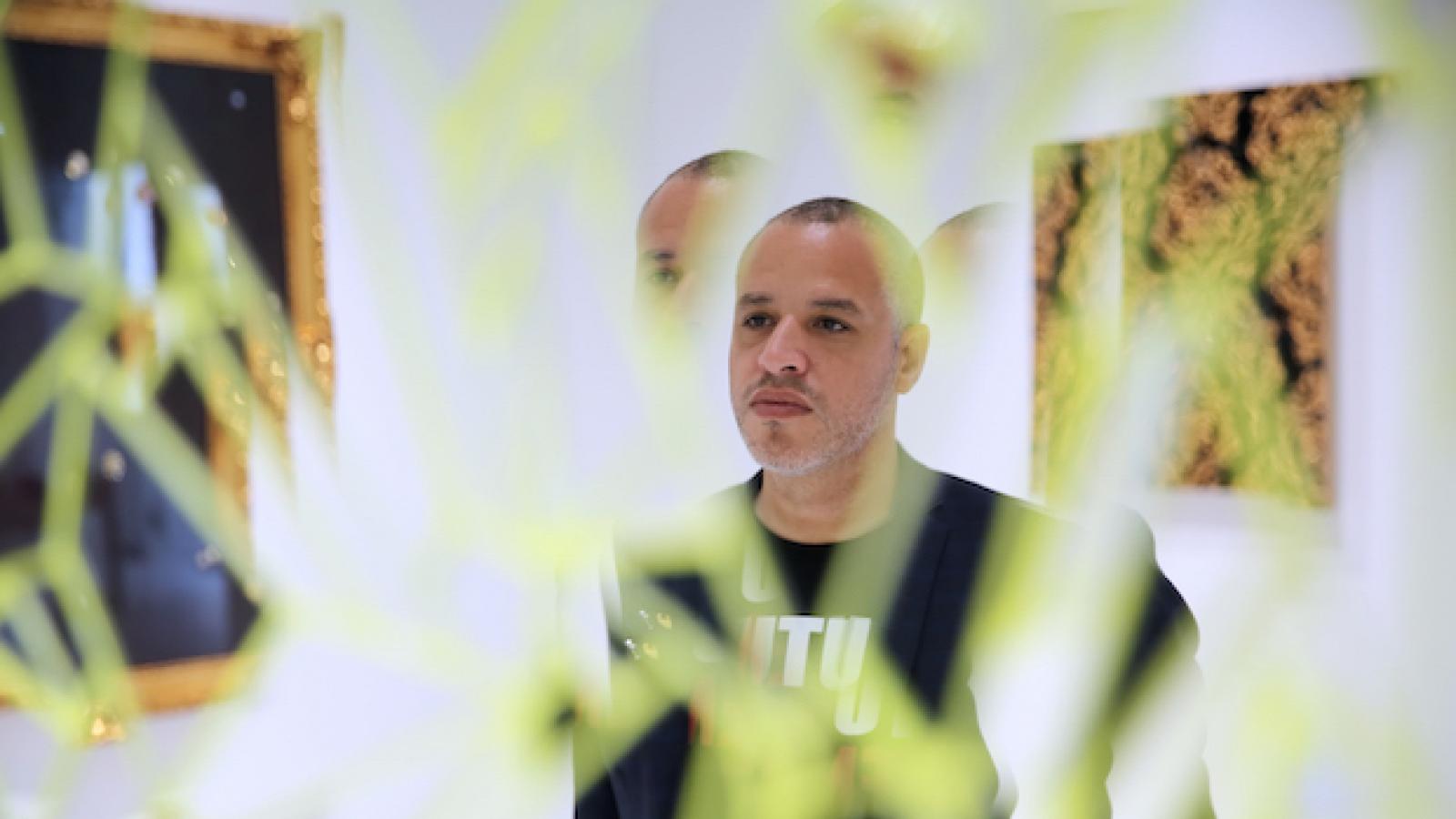The Art of Memory: An Art Talk with Carlos Rolón

For Chicago-born and raised artist Carlos Rolón, becoming an artist wasn't a single "Aha!" moment but rather a series of moments that, strung together, stirred his curiosity and illuminated his path.
There was, for example, the poster from the Art Institute of Chicago—possibly of a John Singer Sargent work according to Rolón—that hung on a wall in his grammar school. "Looking at that poster every day and seeing the words 'Art Institute of Chicago' and not knowing what that was piqued my curiosity," he remembered.
There was also the way his father was always building things—a skill Rolón now emulates in his assemblages and installations—and even his father's handwriting. "He had this way of writing his signature that I always found incredibly interesting and fascinating," said Rolón.
An internship at a Chicago advertising firm highlighted the relationship between creativity and commercialism for the young artist, and cemented that he wanted to work at a less commercial level.
"Doing the internship taught me about the idea of commercialization and capitalism and also the idea of manipulation of certain things, of visuals. And it taught me that it was something that I didn't want to do. It taught me I wanted to be a fine artist and to really dig deep down inside," he said.
Over a wide variety of media including painting, installations, music, and art books, Rolón's work interrogates ideas around community, home, handcrafts, sub-cultures, and memory. He has curated a book of photography that references his mother's sideline as a home-based beautician, created extravagantly decorated bicycles to explore Latinx bicycle club culture, and built installations of vintage objects, such as trophies, which explore childhood memories and his father's collections, to name just a few artworks.
It is important for Rolón that viewers be able to engage with his work not just on an emotional level but a tactile one. For example, for the exhibition Imperial Nail Salon, visitors could make appointments to have Rolón create bedazzled works of nail art on their own hands, in effect themselves becoming part of the exhibit.
"As a child going to art galleries and museums, you're always told that you can't touch certain things, and you have to keep your distance," Rolón explained. "[I don't want people who see the artwork to] feel like they're in a sterile environment where they can't be part of the work and they're not involved, because the art is influenced by the community."
Rolón's latest exhibition, Carlos Rolón: Classic Tracks, Migrating Rhythms—a solo show currently on view at Movimiento de Arte y Cultura Latino Americana [MACLA] in San Jose, California, with support from the NEA—deals with both historical and individual memory. The oversized paintings of tropical flowers reference the wallpaper in his parents' home as well as the Spanish conquest of the Americas. Rolón described the work as "my re-imagination of what the landscapes looked like before the Spanish came and basically destroyed the landscape looking for gold and minerals."
The show also includes an installation of records and a record player mounted on a pushcart Rolón built, the design of which was inspired by three local communities. Visitors are welcome to engage in the exhibit by playing records of Vietnamese music, another nod to the community. Rolón calls the exhibit "my way of creating a quilt or a textile that is taken from different influences and putting it together to make one seamless fabric."
Rolón realizes there's a certain riskiness involved in the whole endeavor, that the story he's ultimately trying to tell won't be clear. But, he maintained, that uncertainty is also part of the process of making art. "I think that that's what being an artist is really about, creating dialogue but also taking risks with ideas," he said.



